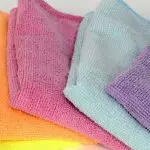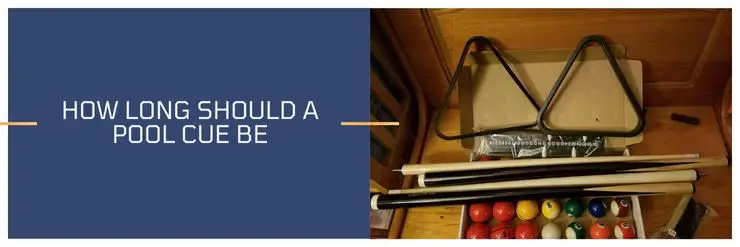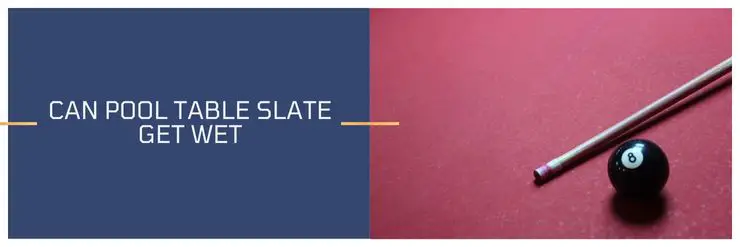When you look at a cue, do you just see a fancy-looking stick to hit balls with?
Do you just select the first one that comes to hand? Perhaps you understand the stick is topped with a tip and protected with a bumper, but do you understand what goes in between?
The material, tip, cost, weight, style, and function all play a part when choosing your stick.
First of all, one should know the purpose of the cue. Some cues are for playing while others have more specific functions such as jumping or breaking, etc.
Likewise for all aspects of the cue – every part of the cue plays a role in its function.
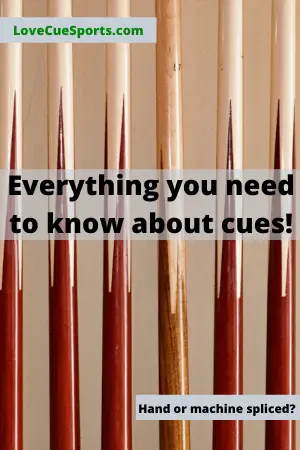
Is it ok, to use your Players PureX HTX15 18oz with a Kamui clear black soft tip for breaking with?
Sure you can break with this cue, but for optimal results and to cause less strain on your cue I wouldn’t personally recommend breaking too often with it.
This is an extremely detailed guide on everything relating to a cue, Believe me, there is more to that battle-ax than you might realize.
With so much to know about a pool cue, this guide will go a long way in helping you to know how to choose a pool cue.
I will explain:
- Different types of cues
- Different cue shafts
- Different types of tips.
- The differences in the materials for the cues
- How best to care and maintain your cue.
- Some good tools and tips to help keep your cue in good shape.
- How to choose a pool cue
When you have graduated from this billiard cue masterclass, ill explain how to choose a pool cue that is best suited to you and your play style.
After this, you will feel more confident picking the right one for you!
How to choose a pool cue
Picking a pool cue can be somewhat frustrating. To help make your decision a little easier, you first need to determine your level as explained earlier
Beginner player – $50 – $150
Intermediate player – $50 – $200
Advanced player – $200 – $1000
If you get the chance to hold the cue, you want to feel the different weights, see which one suits you best. A lot of cues have a weight bolt system so if later on down the line you feel you need to add some more weights, it can be done.
The tip is an important factor as explained above.
Soft tips – Good for adding more spin on the ball. holds chalk well.
Medium tips – A mixture of Hard and soft.
Hard tips – Good for transferring energy and power. don’t hold chalk as well, tend to miscue.
A tip is a personal preference based on how you play, just remember to scuff and shape your tip when needed. this will help it hold chalk better.
What Cue Length Is Right For You?
Pool cues come up in different lengths and you cannot specify which length is right for you. However, you will get to know after a few times’ uses if that cue length is comfortable for you or not.
Although most adult cues are between 57 – 58 inches long and this is usually ideal for most sized adults.
Pool cues for kids are shorter than the adult cues. If you are an adult but your height is 4 feet 11 inches, you can go for a shorter cue.
Also, if you have a home table, but not enough cueing space then a shorter cue might be the answer for you
What Cue Weight Is Ideal For You?
Here again, like cue length, you can choose the weight as it suits you. Pool sticks vary in weight like between 18-21 ounces. It also depends on how you play like what is your style. Some players can handle the heavyweight cues but some can’t.
Kids should play with lightweight cues. But, remember that weight plays an important role in making a shot. A light cue provides a fast shot which becomes hard for new players to control. However, the lightweight cue slows down the object ball.
heavy cues hit harder and can transfer more energy to the cue ball.
Players often start with an 18-ounce cue, but most of the cues come up with weight bolts that help you to adjust the weight.
If you are a new player, try a few cues in the beginning and soon you will know what suits you. So you cannot say that this weight is good and that is bad as it is up to your choice.
Types of billiard cues
Looking for anything in particular, then click which type of cue you want to learn more about below:
- What is a Jump Cue?
- What Is A Break Cue?
- What Is A Jump-Break Cue?
- What is a Playing Cue?
- What is a Sneaky Pete Cue
Which Type Of Cue Do You Need, 1-Piece Or 2-Piece Cue?
You should use a 2-piece cue if you play a lot or if you play somewhere else other than your home.
However, a 1-piece cue is ideal to use as a rack filler so your guests would have options to use any cue.
The 1-piece cue is also cheaper than a 2-piece cue.
With a two-piece, the butt and the shaft can be made independent of each other with a lot of technology built into each section.
The butt and shaft will be connected together using a joint. these come in many styles and a lot of cue manufacturers have their own style of cue joint. But you can, as long as the joints connect correctly, connect perhaps another shaft to your butt.
Perhaps you have a nice butt with a wrap and weight that’s perfectly suited and you want to connect it to a low deflection shaft? If the joint allows it then you have this option.
Obviously, you are limited with a 1 piece. These are usually left for “house cues”
Other than wood, a pool cue is also made of graphite, fiberglass, aluminum-plastic, carbon fiber, plastic, and hybrids.
But, only wood, graphite and fiberglass cues are good for beginners. You should not waste money on plastic or aluminum cues because they might be only good for kids.
However, advanced players can have hybrid or carbon fiber cues.
A wood cue is not new as we have been using it for ages. Generally, professional players prefer a wood pool stick.
The wood cue can give you many benefits like it is durable and you can easily repair it. You get the best feeling when stroking a wooden cue over your bridge hand.
The feel is an important factor, and it feels good, you feel good!
Wood is a good choice for cues as its strong, durable and can be crafted to a high standard. The downside to a wood cue is it’s usually expensive and over time, if the cue isn’t protected and maintained correctly, it can warp.
I have included steps to keep your cue in perfect condition within this article
Many different types of wood have been used to make cues. usually, English pool cues and snooker cues use Ash wood while American cues use Maple wood.
Fiberglass, Graphite Cues And Carbon fiber cues
Although some major advancements in these types of cues have been made they still fall far behind their wooden counterparts in popularity.
These cues are excellent for new pool players because they are cheaper than high-quality wood cues.
I would say, for the most part, they lack the same feel as a wooden pool cue. When you can feel the wood grains it helps to judge the speed of the shot being played. Most of these cues I’ve found don’t provide the same level of friction.
It may sound a little negative, but as I said a lot of advancements are being made. especially with bonded materials.
Predator has a fantastic carbon fiber composite cue available called the REVO. although it’s not cheap, other brands such as Cuetec have their own versions at more affordable prices.
A Sneaky Pete cue is the name given to a type of cue that from the outside looks like your average typical house cue – and therefore nothing to be too worried about.
But, nothing could be further from the truth. Sneaky Pete cues are sometimes the best possible cues available.
Their looks are designed to give the appearance that their user is an amateur player and nothing to be feared. So, in the past, Sneaky Pete cues were used by hustlers to earn from unsuspecting marks.
Sneaky Pete cues usually have wood to wood joints, to hide the 2 pice cue and a traditional design.
Although not used so much for hustling anymore, they are still hot sellers on the market today.
[su_note note_color=”#edf6ff” text_color=”#333333″ radius=”3″]Learn More…
Who was the real Sneaky Pete? Curious to know more about who he was and the history of a Sneaky Pete cue? Check out my article on what a Sneaky Pete cue is and learn all about them and the histroy! [/su_note]
As the name shows, a jump cue is for jumping the cue ball.
A jump cue is different to a standard pool cue for a number of reasons. Such as, it is mostly around 40 inches’ in length which is the minimum size for a tournament.
Its weight much less at around 10 ounces, so that’s why it helps in jumping. Though a player needs to jump a cue less, it acts as a life-saver in a game.
The tip of such cue is also harder than other cues. Its hard tip helps transfer the energy which helps in jumping – and breaking.
What Is A Break Cue?
Pool players use a break cue just for breaking. It’s recommended because the hard impacts of a break will eventually damage a regular playing cue. The ferrule will get damaged easier and the tip will become mushroomed and need to be replaced sooner.
Break cues have a hard tip, whereas the length goes up to 58 inches, the same as a regular playing cue.
Breaking cues are usually heavier than the standard pool cue. The weight ranges from 20oz to 27 oz.
Want to check out my best break cues HERE
What Is A Jump-Break Cue?
It is a combination of both jump and break cues.
It has 3 pieces so if you are looking for that jump shot, you can just use the shaft and the smaller lighter butt to jump.
This type of cue helps you to save money because you don’t have to buy two different cues. You can use it as a jump cue or a break cue with a little management.
What is a Playing Cue?
This is the main pool cue which is mostly in the hands of a player.
Generally, a cue with a medium tip is what we consider a standard cue and it works great. This type of cue has a variety in terms of weight, length, and material as well.
But, I would say you are most likely going to see a “good cue” that:
- weighs between 18 – 21 oz
- has a length between 57-58 inches
- constructed of maple or ash wood. or some more advanced hybrid/bond materials
- have a medium tip (Although, this is a personal preference
- Possibly a cue wrap – such as Irish linen, for grip
- most likely some cue technology built into it
Cue For Women
Some people think that cues for women are different but this is not so.
Many companies sell by saying that they are special cues for women but you don’t need to buy them if you are only buying them for their abilities for women.
They are, however, styled in a way that might be more suited by women than men. such as a pink-colored cue
I will say, if you want a cue then “men’s” and “women” cues are basically the same except for the design. so when choosing a cue, choosing one what is best suited to your level regardless of it being a gender-specific model.
Cues for Kid’s
A kid’s cue is shorter in length than a cue for adults. It is also light in weight.
But short people don’t necessarily play with a kid’s cue as they can use any regular cue of medium length.
Kid’s cue ranges between 30” to 57” depending on their size and age.
A cue size guide for your child:
- If they are shorter than 3 foot 4 = 29 inch cue
- If they are between 3 foot 4 & 3 foot 6 = 42 inch cue
- If they are between 5 foot 2 & 5 foot 7 = 52 inch cue
The weight is another factor to consider. A junior usually weights between 16-18 oz. A child of 7 and up should be able to handle a 17oz cue.
**To compare – a regular cue is 57-58 inches and weighs between 18 – 21oz**
Snooker cues differ slightly to American pool cues. They are designed for a different sport so it only makes sense they are different.
They are used on balls much smaller and lighter and snooker requires more control and precision than pool. Therefore the cues reflect this.
A snooker cue guide:
Length: 57-59 inches
Weight:16-18 oz
Tip: 8mm-10mm
Style: 1,2 or 3 piece
Material: Ash wood
Ferrule: Brass
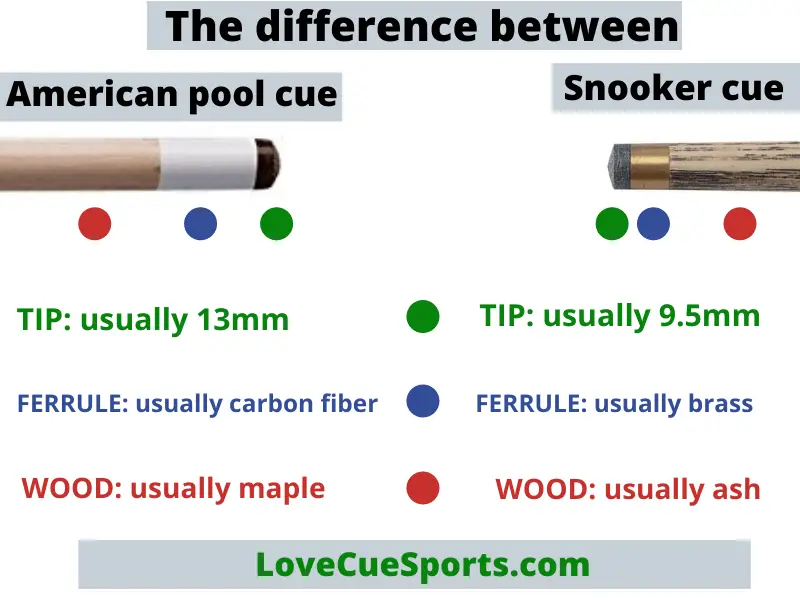
Carom billiards is another type of cue sport and like snooker its been designed for that particular cue sport and therefore differs from American pool.
Carom cues also sometimes called short cue or stout cue. It is lighter and shorter than pool cues. However, they have a conical design with a taper that helps in controlling a heavy pool ball, thus reducing the deflection
Length: 54-56 inches
Weight:16.5-18.5 oz
Tip: 11mm-12mm
Style: 1,2 or 3 piece
Material: Maple wood
This type of cue is a breaking cue and it is ideal for professional players.
The tip of such a cue is either of hard leather or resin because both give maximum friction that a player needs between the shot and the cue ball.
This is also a special cue that are made according to a customer’s choice.
Ready-made cues have standard sizes and weights but custom cues are not available in the market due to their specific dimensions.
Generally, people get them according to their choice of weight, length, material, finish, and color.
This cue is to make masse (swerve) shots where the player hits the cue ball with great spin and the ball moves in a curved path.
This type of cue is smaller in length like from 44 inches to 48 inches.
Types Of Cue Tips
The type of tip you have at the end of your cue makes a huge difference to your overall game – don’t underestimate your cue tip!
The same can be said for maintaining a good cue tip. to get the best results, a tip needs to be groomed when needed. U
sing a good tip tool when your tip needs to be shaped will definitely help
Cue tips are made of different materials so their quality also varies also the technique that makes them differ. There are two main types of leather tips, they are:
solid Leather tips:
This non-layered tip is usually made from pigskin or cowhide and is less expensive and therefore more widely used, especially on house cues and cheaper cues. This type of leather tip will require more regular grooming. If your tip starts to mushroom then its time to pull your tip-tool out and trim the “mushrooms” from the tip.
Layered tips:
In contrast, layered-tips are more expansive and rather than using 1 piece of leather a layered-tip can be made using many layers. Because of the many layers, sometimes 10 or more, they have the ability to hold their shape better and therefore require less grooming.
Chalk plays a big part in any cue sport, so having a tip that can hold chalk is an extremely important factor too. it’s the chalk that helps create frictions and mitigates miscues.
Cue Tip Material
A pool cue tip is made of leather, resin, or a combination of both materials. The material also determines the hardness and softness of the tip.
For the best material for layered tips, Japanese pig leather is considered the best because it has a very tight leather grain.
Leather cue tip:
Leather is ideal for making soft tips and as mentioned its idea for non-layered and layered tips. The later one is stronger than the one-piece construction. However, a leather tip is expensive.
Resin cue tip:
Phenolic resin is ideal for making the hard tips and the hardness is just like a ball. It is cheaper than a leather tip. Phenolic tips are idea for jumping and break cues because of its hard nature is idea for transferring maximum energy
Hard Cue Tip
Generally, it is made of resin which is a hard material but sometimes the hard type of leather is also used. You will see such tips on the jump and break cues because it is ideal in transferring the power from a cue to the ball.
Hard tips don’t need much maintenance so the replacement issue is hardly there. But, the hard cue tips can’t take the chalk well, hence miscuing happens.
Medium cue Tips
As the name shows, they stand between the hard and soft. Like they can be used as a break cue without mushrooming or can hold the chalk, like a soft tip. Medium cue tips help to control the ball very well. These are either made of leather as a single piece or a combination of leather and lamination.
You have to maintain these tips quite often. A casual or a beginner pool player usually choose a medium tip cue.
Soft Cue Tips
The player can achieve the ultimate ball control with a soft cue tip. Such a cue tip is ideal for playing with english, because they absorb energy more.
The tip staying slightly longer on the cue ball than the hard tip and therefore grips the cue ball better which will create more friction and add that english to your shots
Such a tip has no issue of miscuing because it can hold the chalk well.
But soft tips need a lot of time to maintain them regularly. You will have to replace or repair this tip often if you play with it daily.
However, if you buy a high-quality soft tip, it will last for long.
Related Articles:
Pool Cue Parts
Ferrule
The ferrule lies between the tip and end of the shaft in the form of a small white piece. It absorbs the shock and transfers energy from the tip to the entire pool cue.
The quality of the ferrule varies; as cheap cues have low-quality ferrule which gets cracked easily. So, always buy high-quality cues as they have hard ferrules that don’t get damaged.
Generally, ferrules are made of carbon fiber, Aegis-2, Ivorine-4, Juma, and Elforyn, and they all differ in terms of feel, so choose it as you like.
Pool Cue Wrap
A cue wrap is either of leather or rubber and Irish linen. You must prefer a rubber wrap if your hands sweat because the rubber provides a strong grip.
However, the leather wrap is great for giving a strong grip over other wrap types. It also helps in making a good shot with a soft hand.
On the other hand, Irish Linen gives a weak grip and it only suits to very experienced players. A very strong grip may hinder the accuracy of a shot as you cannot control the cue ball well.
But amazingly, a cue with no wrap is also good for those whose hands sweat, because the finish of the butt and cue shaft is different that helps in having a good grip.

Low-Deflection and Standard Shaft
A low-deflection shaft reduces the deviation of the cue ball.
LD shafts are designed with a minimum total mass which helps reduce the deflection.
It’s worth noting that both types of shaft have a very slight deflection of the cue ball, but with a low deflection shaft that cue ball deflection is reduced making for a more accurate shot
A player can play well with a standard shaft and some players prefer them, but LD shafts are designed to add more accuracy when applying side to your shot.
By having an LD shaft, the cue ball will stay more true to a straight line, and veer off less to the side.
A regular shaft will have more deflection and therefore, veer off more. creating a less accurate shot.
It’s hard to say LD shafts are better than regular ones as it’s possible to play at the highest level with both types. Its really down to what you’re used to. LD shafts will give you more accuracy overall tho.
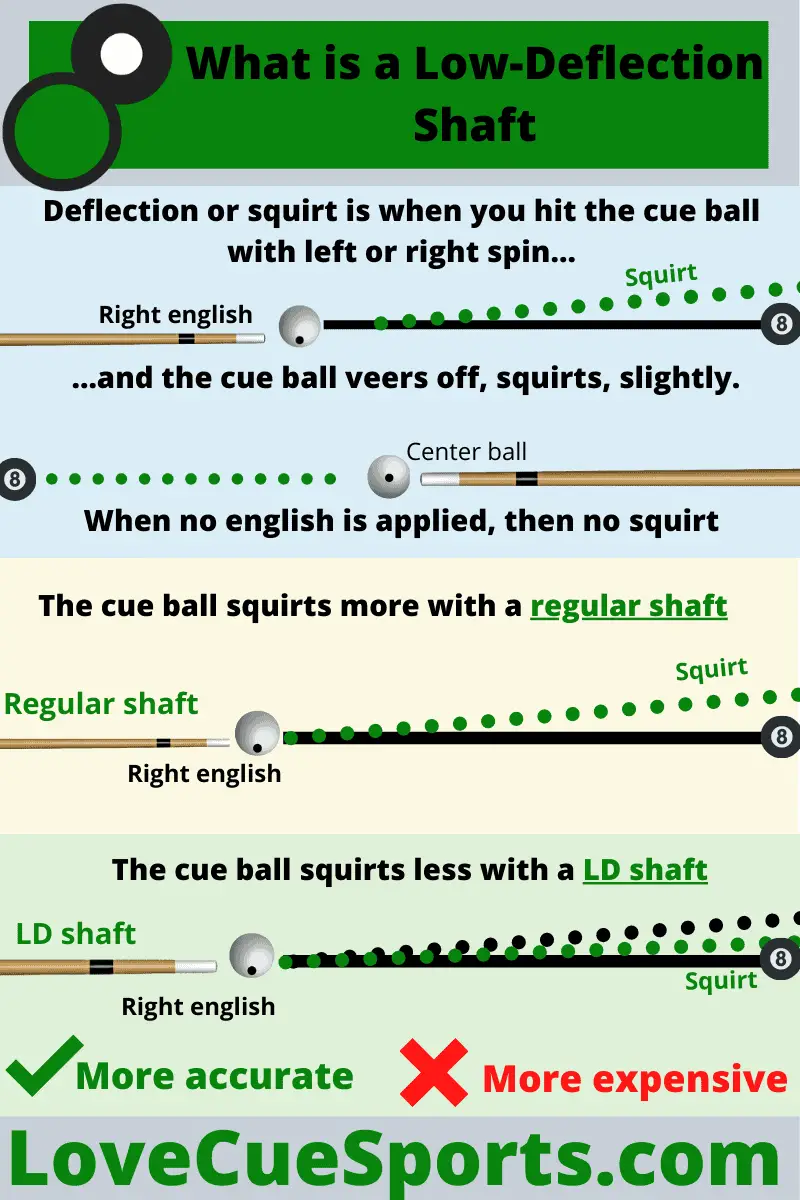
Pool Cue Construction
The construction of the pool cue varies, and it determines the style of the cue which is either modern or traditional. Moreover, the construction method also varies, including full splice, and half splice cues, as well as the decal or inlaid cues.
These methods are not new as different companies have been using them for years. Let’s look at it in detail.
Handmade Pool Cues
As it is clear that such cues are made with hand. However, it involves certain tools for cutting and pasting various parts. This method is very time-consuming, so it is expensive. Moreover, it is a traditional method, but a handmade pool cue is stronger than a machine-made cue.
Machine-Made Pool Cues
Different machines are used for making these cues. The type of machine depends on the style and design of the cue.
Modern Pool Cue
They are made with machines and new technology is used. Simple cues need simple machines but detailed cue designs need high-end technology like CNC machines and some other tools.
Traditional Pool Cues
They are generally of wood like maple and they have stickers on their top. Such cues also have in-built inlays which a lot of skill is needed to make them. You also need special tools and high-end skill for making the traditional pool sticks.
Full Spliced Pool Cue
The main factor that separates a machine splice from a hand spliced cue is the way they are made.
If you check out the butt of your cue, and look at the points of the design. If the points are rounded then you most probably have a hand spliced cue.
Hand spliced are more expensive than machine spliced.
This type of splicing is achieved by milling both ends of the butt.
The lower part of the point is one section that goes up to the entire length of the cue handle. Such cues are used in homes and they are generally custom-made.
Full spliced construction is very durable because the manufacture uses the milling tools for making the cues and it is a traditional method.
It is also very time-consuming but the build quality is excellent.
such cues are very expensive.
Half Splice pool cues
These cues are more popular than other construction methods because the method is cheaper than full splice. However, it needs special equipment to make perfect cues.
People who make custom cues prefer a half splice method because it is stable and helps in making sharp lines on the tips of the points.
Inlay pool cues
This construction involves cutting inlay pockets into the wood.
It needs special tools including CNC pantographs so that the maker can cut the delicate inlays.
The inlay method of making cues require a huge amount of skill as it creates the artwork of the cue into the wood. This creates some very beautiful cues that look stunning. but as you can imagine, they are expensive.
overlays are the opposite, having the artwork created on the wood and therefore more common and cheaper to make.
Decal Pool Cues
This is another construction style for pool cues. This is a low-cost method that involves the fixing of decal below the cue finish. This method is very delicate and needs the accuracy of a high level. Decal points are only for decoration instead of structural. However, people with any budget can get their desired design through a decal.
Various Cue Levels
The cue level varies according to the type of players.
- A complete novice – For this level, a house cue is perfect
- A beginner who has just started and wants to learn this game.
- An intermediate player, someone who starts taking the game seriously.
- An advanced player, who understands the game very well.
- A professional player is the one who is very skilled and plays in tournaments.
So choose a pool cue according to how you play.
Beginner Cues
Generally, the maple wood cue is ideal for beginners. The stick should have a leather tip because it comes up in both hard and soft forms. They should not be so heavy or so lights as both are difficult to handle. Generally, they are available from 50 dollars to 150 dollars.
Such cues are lightweight, easy to control, and you can clean them easily.
Don’t be expecting perfect build quality with these cues. chances are the tips will fall off or you’ll come across other issues. That being said, its possible to get some great cues for a low price nowadays.
Intermediate Cues
They are designed for intermediate players and they have to be of high-quality. It should provide a strong grip and the stick with a leather tip is ideal.
Canadian maple is ideal for intermediate cues. The price of this cue ranges from 50 to 200 dollars.
Such cues have scuffed tips and you can adjust the weight. Some might have more advanced tech inside them but they are still on the “cheap” side of the price range when comparing cues so again expect so imperfections, especially around the tip area.
Want to know my very best pool cues for intermediate players HERE?
Advanced Cues
These cues are designed for top-end players. They are very durable and the tips are mostly soft because the skilled players can handle them easily.
They are more expensive than the beginner and intermediate cues and range from 200 to 1000 dollars.
They will have certain game-enhancing tech inside them. Most of the big cue names have their own propriety tech they use.
Generally, Canadian maple is used to make these cues or maple wood composite.
The taper, tip, and joint will be noticeably different too.
Cue Accessories and Care
Cue Case
Those who play pool know the importance of a valuable pool stick so they keep it safe and also maintain it regularly. Special covers or cases are available to keep the cue protected. These covers will keep the stick clean, preventing it from dust or water, and warping, etc.
Both aluminum and leather cases are popular, however, leather is better than metal because the later one can get hot if kept outside. These cases are designed according to the type of the cue, like for 1-piece cue or 2-piece cue.
Pool Cue Tip And Its Tools
See the above section to know about pool cue tips in detail. However, a pool cue tip has certain tools that you can use to keep it fit. Like, the common tools are tip picks, sanders, cue cubes, tappers, and scuffers.
If you want to learn how to replace a pool cue tip then I have a great guide walking you through how to do it yourself. It’s something all pool players should know.
Cue Gloves
Playing with a cue glove helps create less friction and therefore a more smooth feel. Players who are starting to take their game more seriously will usually invest in such items. They are very worth the money in my opinion, especially if you play regular
Want to see my best pool gloves on the market, I highly recommend checking them out if you are interested in a frictionless stroke.
Cue Racks
Racks are available in different designs, styles, shapes, materials, and colors. Wooden racks are common and they are also very durable. You can place the racks on the floor or some tables. Different sizes can hold a different number of sticks
It’s just a perfect place to hold and store cues, especially if you own a number of them.
Pool Cue Weight Bolts
Some pool cues have an adjustable weight bolt system, which allows you to add or deduct weight to the cue. depending on your preference.
Having different weights help balance the cue to your liking as well as give you more weight for your breaks.
If you are looking for a guide on how to change the weight bolts in a cue then check mine out, it takes you through step-by-step!
Cue replacement bumpers
This is also another cue accessory that protects the end of the cue from wear and tear. The bumper is easy to replace and it is available by various brands.
Pool cue extension
Cue extension can extend the cue to help with longer reaching shots. This is an accessory that helps you add some extra length to the pool cue.
By simply inserting a midsection to your cue, through the cue joints, allows for some extra length when needed.
Pool Cue Maintenance
Looking after your cue is a wise thing to do. not only are they expensive, if miss treated they can warp over time.
Wipe the cue with a damp cloth but be sure to then wipe with a dry cloth. Don’t leave any water on the cue. Waxing the cue will also help protect it.
To learn more about cleaning a pool cue shaft like new, how to do it in 3 easy steps! no more sticky shaft!
Keeping it stored correctly, especially while traveling with it.
Damp conditions will ruin a cue over time so store it somewhere safe and dry.
remember to inspect the ferrule for cracks. Also the joint too.
Use the “sight test” on the cue to ensure its straight
Don’t lean the cue against the wall
As mentioned above, take good care of the tip – regular maintenance will be needed!
Check The Warping
Hold the butt end of the stick and take it up to your eye and then look down the cue towards the tip. rotate the cue slowly in the hands and check if the shaft is bowed or warped, and don’t buy it if it is so.
Check The Tip
It should be well glued to the ferrule. Take the tip and pinch it between the thumb and index finger and softly move it side to side. If it pops off, you will need to re glue it back on or glue a new tip on.
Check for Ferrule
As we said that ferrule should be well glued to the tip. However, it should be free from cracks and if it is so, replace the ferrule.
Check The Finish
The finish of a cue stick is very important as a bad finish leaves a bad impression. Generally, the butt of the stick has more decoration so check if it is well-finished.
Also, check the shaft for any kind of dents. The dents can annoy a player when he holds the cue in the bridge hand.
See The Alignment of The Cue
When the entire cue is assembled, it is a time to check its alignment. Check if the shaft and butt are well-aligned at their joint. Moreover, other parts also need to monitor, hence, the entire cue should give a solid feel, like from tip to the butt end.
See the Wrap
Make sure the wrap is smooth without any tears. If you see any raised parts in the wrap, get it replaced or don’t buy such a stick. Also, see if it is free from loose threads which often occur in an Irish Linen wrap.
Some Useful Tips
Other precautions can prevent cue damage and warping, such as
- Place the cue in a rack as proper storage will keep it free from pressure, hence, the cues will not warp.
- You must chalk the cue properly because if you don’t do so, it will get damaged. People hardly know how to chalk and do it in a wrong way which also affects the cue. Like, don’t chalk the metal ferrule, instead, chalk it by staying away from the wood and the ferrule.
- Don’t bump the base joint on the floor as most players do it after a shot. This act can badly damage the cue. You can buy a butt pad if you can’t avoid this habit.
- Maintain a cue tip regularly and change it often because a bad tip can affect the shot.
- Keep your cue clean.
Why the Cue Stick Warps?
Pool cue sticks often warp and mostly the low-quality sticks warp faster. But, what are the reasons behind it? Generally, the change of temperature and pressure causes the warping of a pool cue. People often leave the cue in the car or in a basement where the temperature is always different. If the car is under the sun, the hot temperature will affect the stick
Whereas, the basements often have humidity due to a lack of free air and sunlight. If you leave the cue in a basement for several days, it might get warp. Some people think that fiberglass or graphite cues don’t warp, but this is wrong as they can even wrap under the above temperature conditions.
Another factor is the side pressure like sometimes we put the stick against a wall or some other support. Sometimes we put it on the floor and the side objects can put pressure on the cue. Likewise, our shoulders can also put pressure if we dab the cue against our shoulders. So all these pressures can warp the cue. Hence, we should avoid both temperature changes and pressure as well.
How to Straighten your pool cue
If your cue is exposed to damp conditions or miss treated or simply old, it may start to warp. Slight warping is not the end of the world, but you will need to adjust your play accordingly. But if the warping becomes too much there is a simple but effective trick to straighten it!
If I tell you, you might think I’ve gone crazy! It doesn’t require any straightening tools, just your cue, and some string!
Check out how to straighten your warped cue HERE
Conclusion
The above guide is the best way to know about a pool cue and its accessories and when understood correctly gives you a better understanding of how to pick the best pool cue for you.
The guide is equally important for all levels of players, including the beginner, intermediate player and a professional. It is very important to buy the best pool cue even if you are a beginner. Like, how can you practice with a bad cue if you have a plan to be a professional pool player?
If you want to improve your game then it’s important to understand all parts of the game. this way you can make the best decisions and have the best equipment. You learn all this and your game will go to the next level!
Rob is an avid player and fan of all cue sports, particularly 8-ball, and snooker. He has competed in a few local 8-ball tournaments and although he is not a professional, he can compete with the best of them.



